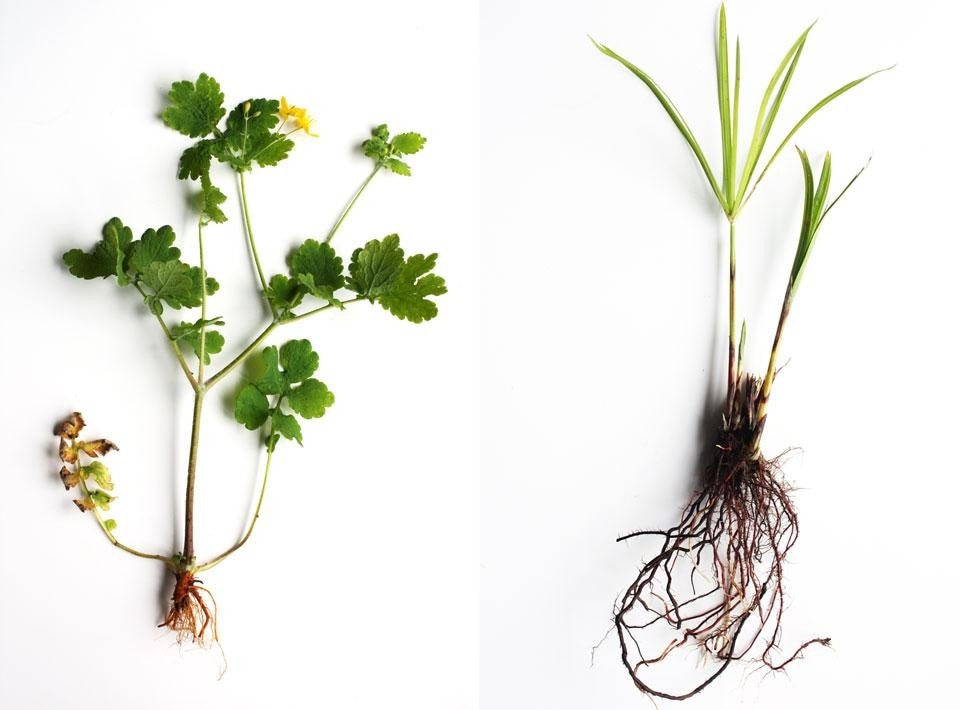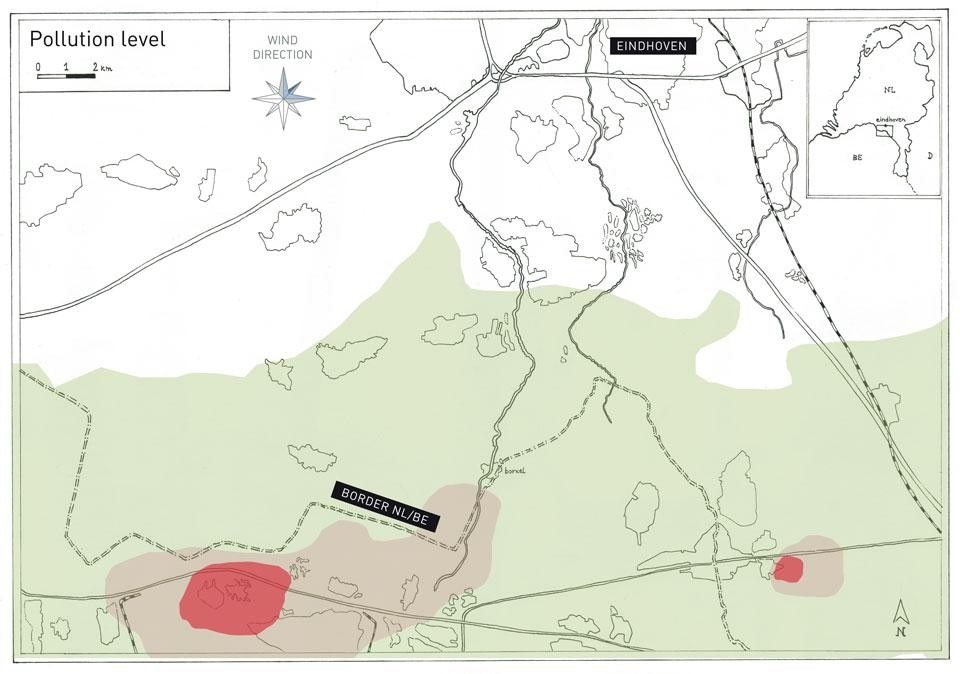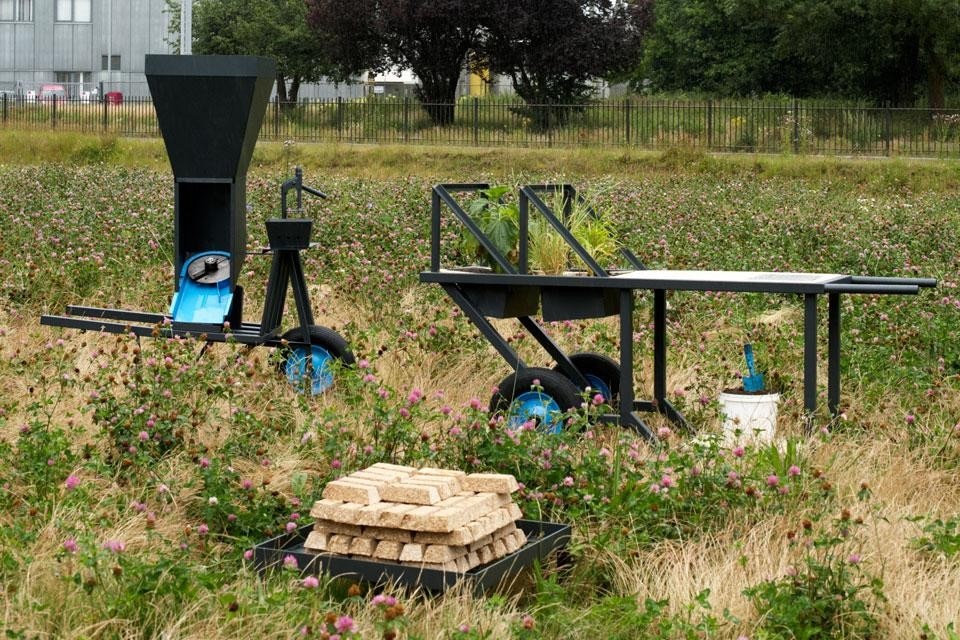Working with scientists and civil services Piovan worked on the revegetation of a polluted field in his backyard in Eindhoven, testing a methodology called phytoremediation. After a one year-season, Piovan harvested the contaminated vegetation and processed in his mobile unit, producing a number of wood blocks containing valuable metals.
Farming the Pollution was born out of Piovan's interest on the dynamics between industrial production and natural cycles, and the processes constituting these elements, simultaneously vital and toxic for humankind. The project consists in a series of devices, including machines and tools, that facilitate four clean-up stages: Analysis, Remediation, Disposal and Production. Piovan's research is collected and available for download as a book.
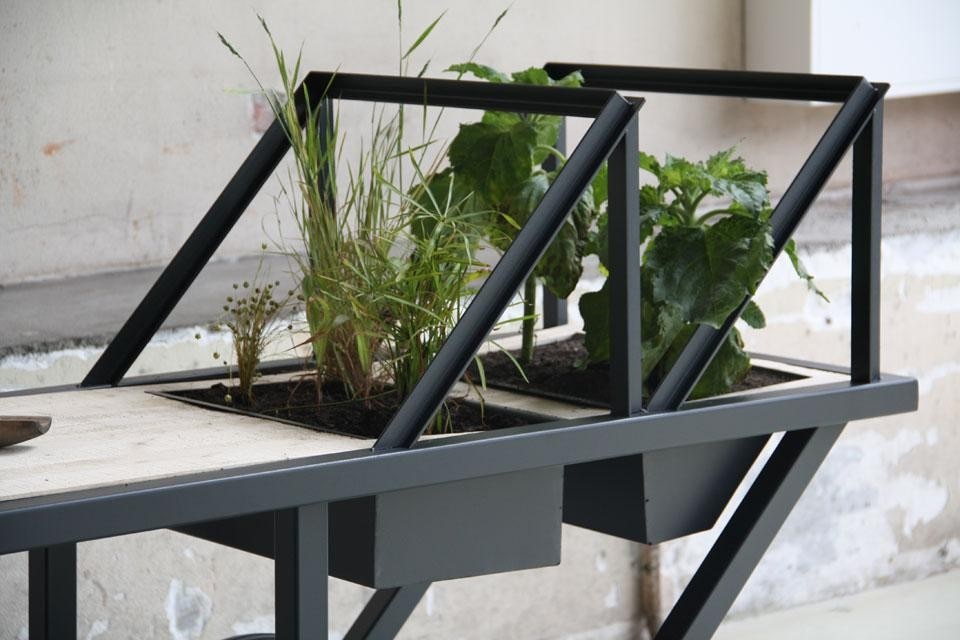
During a research with local services, Piovan observed the presence of soil pollution along a cross-border area, situated around 20 km away from Eindhoven. Past industrial activities, such as Zinc smelting plants, have contaminated large areas of the region. The fact that heavy metal compounds are present in the soil has harmful consequences for the environment, but also for humans. Observing that soil contamination is a form of invisible pollution, Piovan realised the need to visualise this risk among the public. The first step was analysis: according to scientists, acidic soils indicate an higher probability of metal contamination.Here, Piovan developed a tool able to change colour in relation to the environment's pH. A new gradient was developed, similar to litmus paper, but dyed with natural lichens and red cabbage. Supported by a mobile laboratory, the system offers inexpensive public soil analysis in order to map potential pollution among different areas.
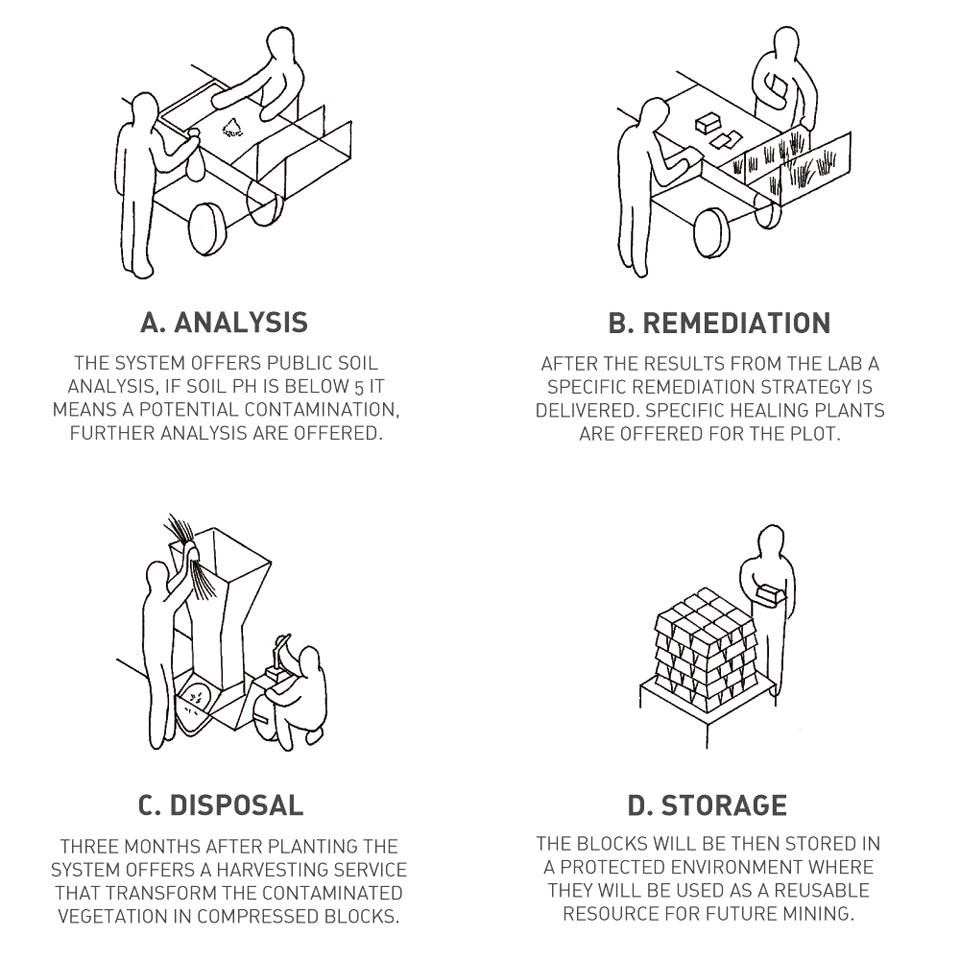
Usually, contaminated soil is removed, buried in a landfill and replaced. In the Netherlands, more then 80 tonnes of contaminated soil are processed every year: approximately the same weight of four towers of Pisa. Piovan argues this method is an obsolete, unsustaimable practice, and proposes as an alternative the principle of phytoremediation (phyto, meaning "plant", and remedium, meaning "restoring balance"). The process consists in a revegetation plan that restores soil on-site through the ability to immobilise and accumulate heavy metals in roots and leaves. Piovan selected local species like the Indian mustard, fern and poplar trees, thanks to their ability to absorb one hundred times more metals then others. In Farming the Pollution, a mobile unit provides specific set of seeds or seedlings to decontaminate the ground.
The project was born out of Piovan's interest on the dynamics between industrial production and natural cycles, and the processes constituting these elements, simultaneously vital and toxic for humankind
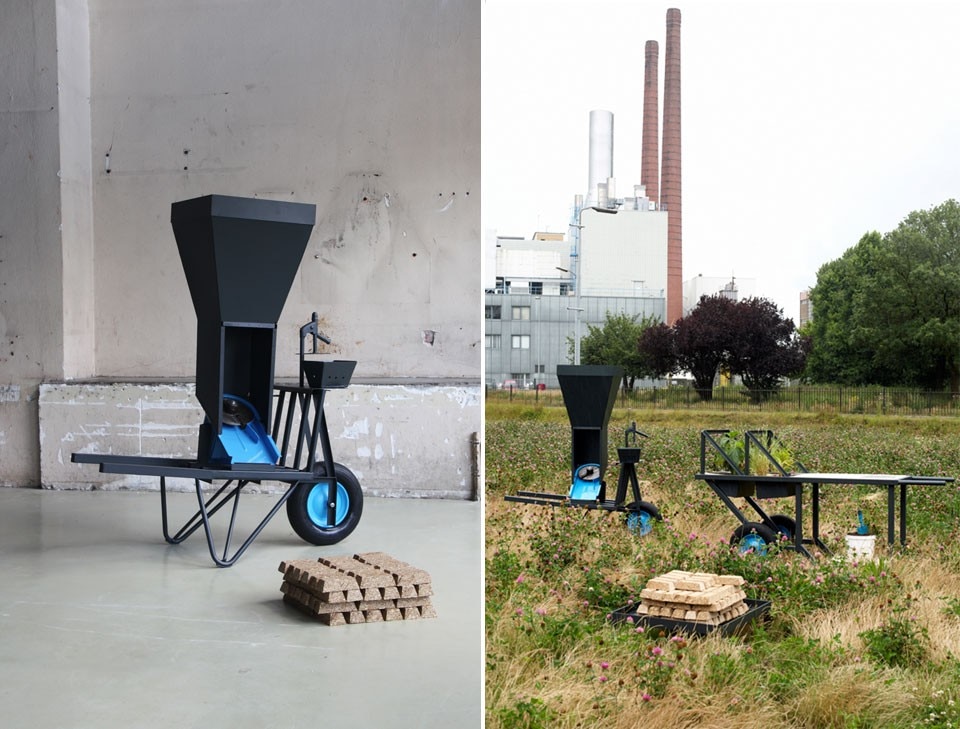
After a period of three months, he seedlings have absorbed enough metals. To prevent pollution leaking back into the soil, the plants are then disposed of on-site, using a device that shreds and presses leaves and roots into dense blocks. After drying, each block contains about one gram of industrial metal such as Lead, Zinc or Cadmium. This system avoids the transportation of a huge mass of soil, being ten times cheaper than traditional soil decontamination methods, according to Piovan. But the process takes time: several years are needed to decontaminate the soil, according to different climates and pollution levels.
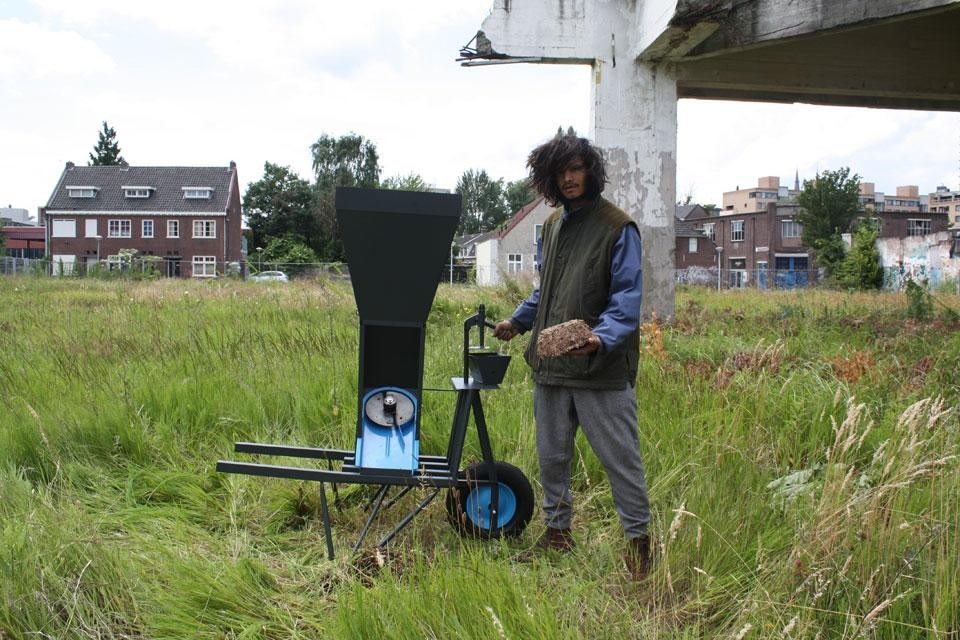
The final phase is one of production: contaminated blocks are stored in a stable environment for future mining. Based on recent biomass technologies, Piovan argues that the future will bring the ability to recycle metals from these blocks, turning them into a profitable investment. Farming the Pollution ultimately proposes a new business model: with the depletion of strategic metals in the Earth's crust, today's mining will decline shortly, and recent scientific studies have claimed that new synergies with bacteria and genetically modified species will be used to enforce the plant's clean-up abilities. Accordingly, Piovan is now looking for collaborations with other designers, scientists and engineers in order to upgrade soil contamination into a suitable resource for a sustainable future.
